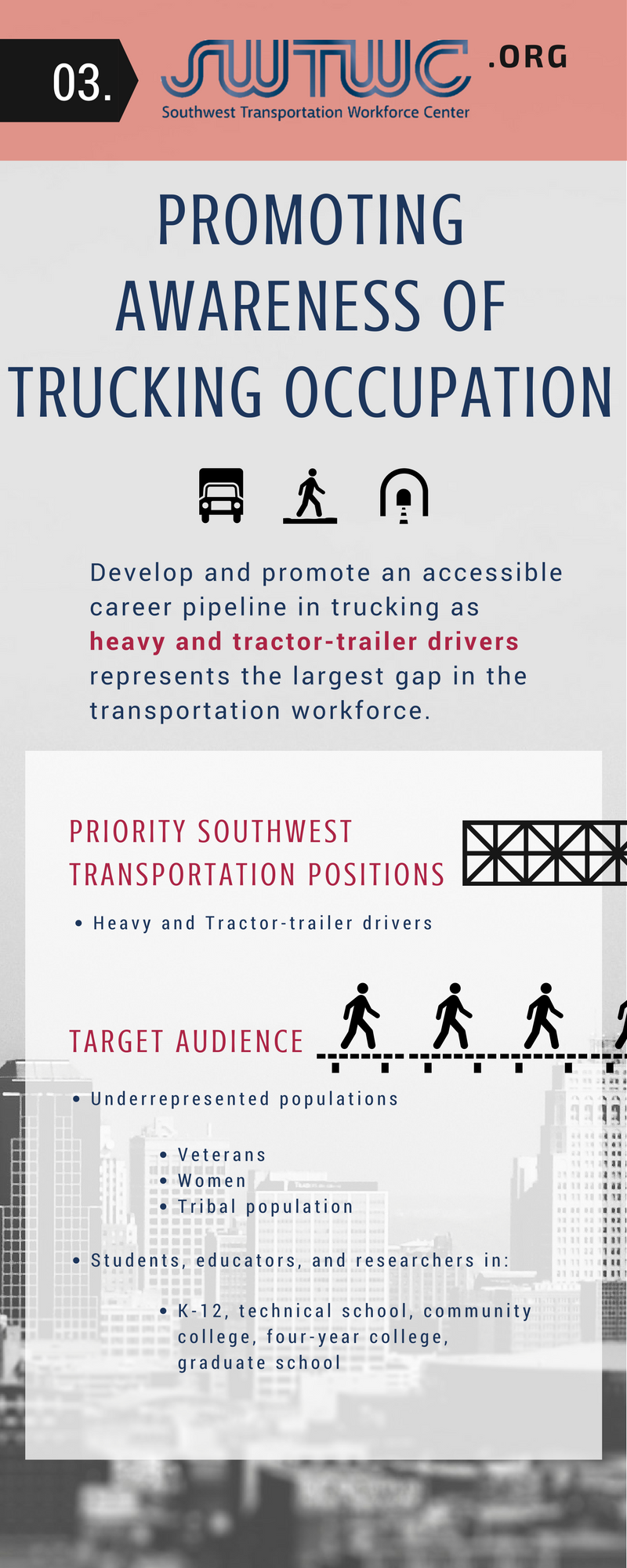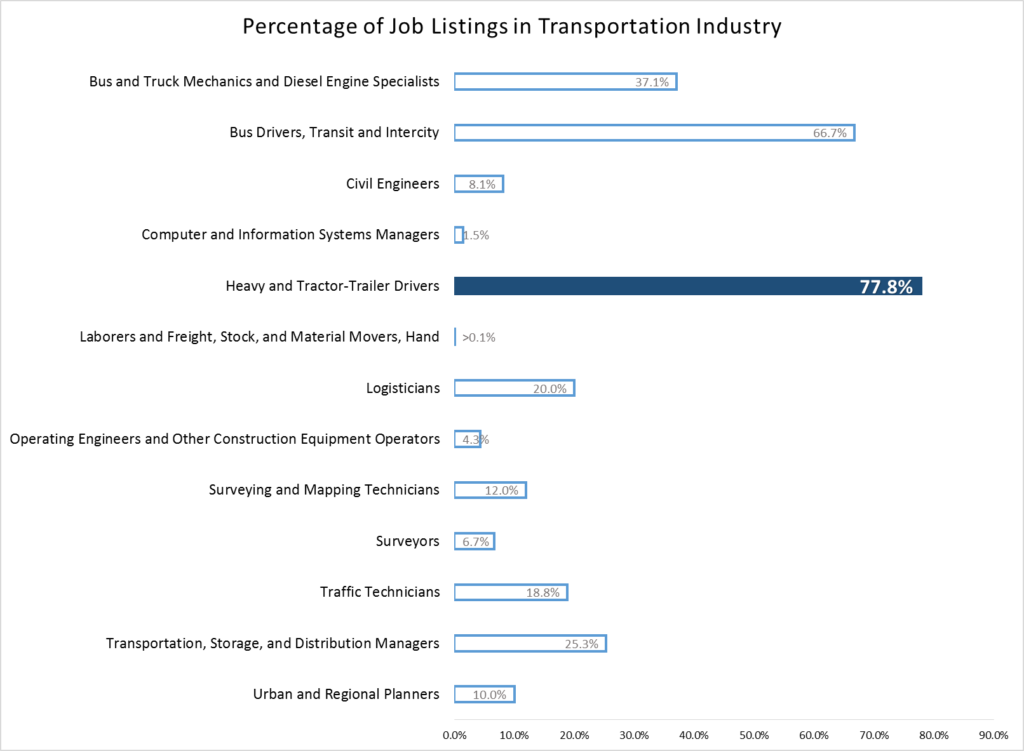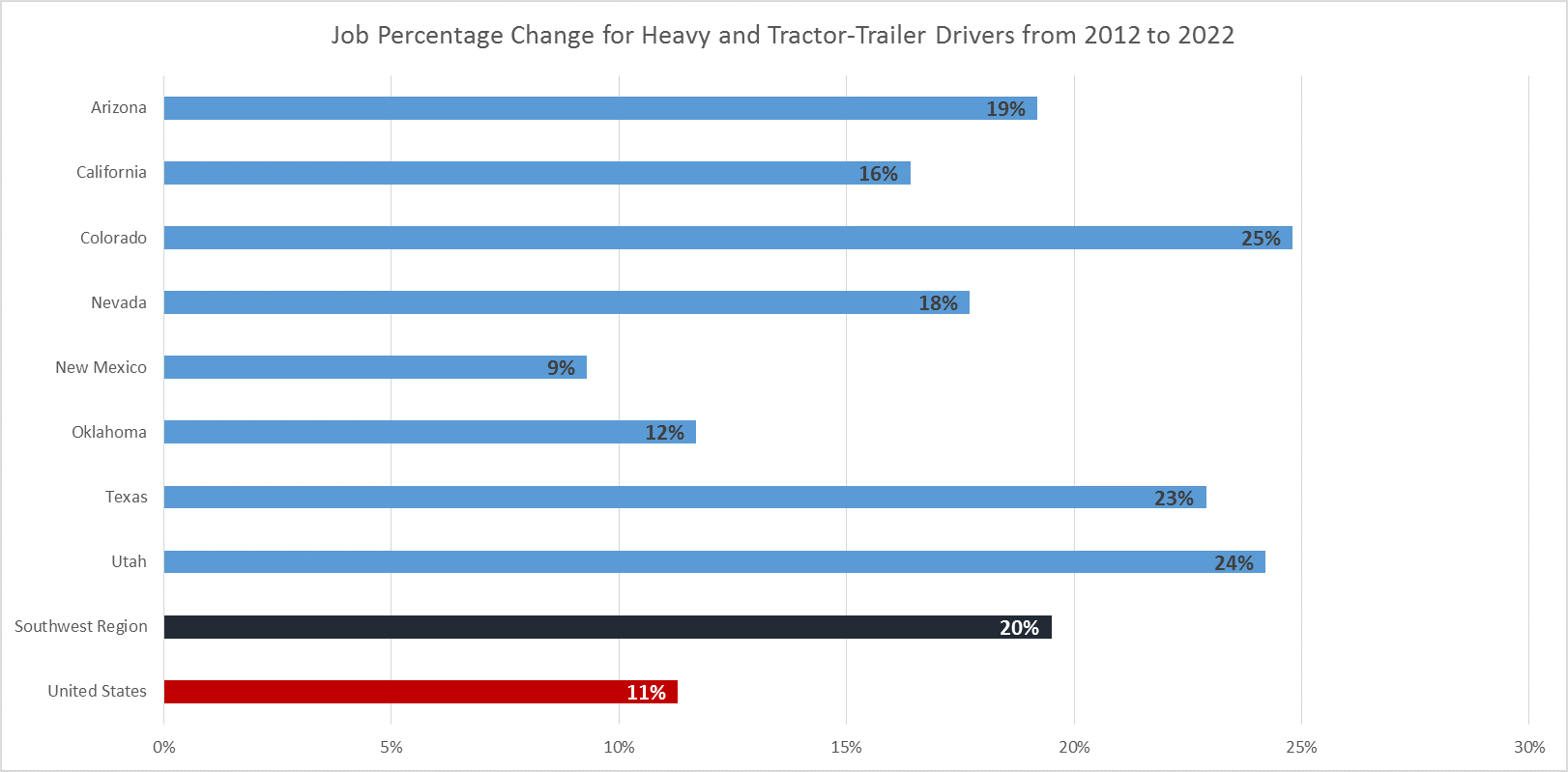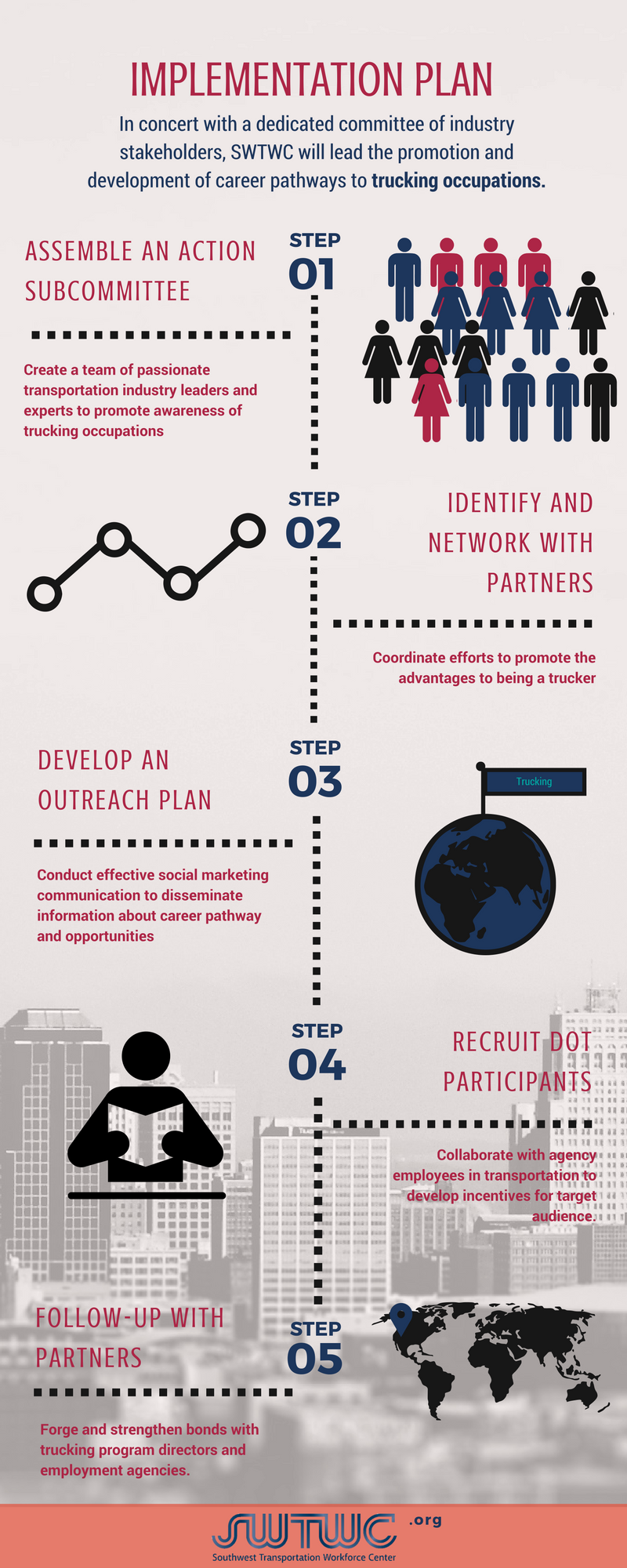
SWTWC’s labor market analysis concluded that heavy and tractor-trailer drivers represent the largest gap in the transportation workforce.
Through Burning Glass’ analysis of job listings in the transportation industry, SWTWC found that 77.8% of job listings are for heavy and tractor-trailer drivers:
Job listings suggest that heavy and tractor-trailer drivers are most in demand in the following metropolitan areas in the Southwest region:
- Denver, Colorado;
- Dallas/Fort Worth, Texas;
- San Francisco, California;
- Los Angeles/Long Beach, California; and
- Houston, Texas.
However, all states in the Southwest region are expected to see an increase in the number of heavy and tractor-trailer truck drivers as data projection shows that the job demand will increase by 20% in the Southwest region whereas nationally it is 11%.
Therefore, SWTWC concluded that efforts to recruit, train, and retain heavy and tractor-trailer drivers or employees in trucking will only benefit the region.
According to the U.S. Bureau of Labor and Statistics and stakeholders in the region, there are a myriad of reasons why there is increasing difficulty filling this position, including: lack of awareness from younger generations, issues with recruiting and retaining drivers, state policies, private sector competition, and drivers’ difficult lifestyle and time spent away from home.
Thus, in order to meet the demand for heavy and tractor-trailer drivers which is already the largest and increasing still, SWTWC will conduct targeted outreach efforts to non-traditional candidates (e.g., tribal populations, women, and veterans), and develop an accessible career pipeline through accredited community colleges and top trucking companies in the region.
For further details on how SWTWC identified the region’s priority occupations, please refer to Phase One of the Job Needs and Priorities Report.
For news and updates, join the SWTWC Network.
Find additional information regarding this initiative on our Ask the Experts page.
Learn more about SWTWC’s Partnerships.
Get involved with SWTWC.






